How Are Diamonds Made? Natural vs Lab-Created Explained
Two Paths, One Diamond Not all diamonds come from the same place — but they all start the same way. Pure carbon, crystalized under immense pressure and heat. Whether it…
The American Gem Society Laboratories (AGSL) operated for over a quarter of a century, opening in 1996. AGSL ceased operations in 2022, absorbed by the Gemological Institute of America. The American Gem Society continues to operate, providing support and resources for its member jewelers, but does not issue grading reports for diamonds, gemstones, or jewelry. Visit www.americangemsociety.org/agslab for information.
PriceScope Pointer: CZ is an appealing and durable gemstone, suitable for daily wear, but we would not recommend a CZ for an engagement ring without first discussing it with the wearer.
Before going on: Check out the PriceScope Diamond Buying Guide
These pages may reference products from companies that help to support PriceScope.
Recognizing the contribution of AGS Laboratories, the AGS Ideal Report is being made available from GIA as a digital-only supplement to GIA diamond reports. That supplement will cost an additional $25. It will be available to order for eligible D-to-Z natural and lab-grown round brilliant and fancy shaped diamonds from January 2023 onwards.
The American Gem Society Laboratories (AGSL or AGS) was a small operation, compared to global institutes like the GIA and IGI, but become well known for pioneering cut grading in the USA, publishing ‘ideal’ proportions in the 1990s, and introducing the first scientific approach to grading cut quality in 2005.
An ‘AGS certificate’ is a frequently used nickname for an AGS grading report. Between 1996 and 2022 the AGS offered several report formats for diamonds. The primary difference between them is whether the report is a Diamond Quality® Documents (DQD) making us of AGS’ proprietary light performance grading system, or a Diamond Quality® Report using a softer system and applying the proportions-based approach used by other labs.
Diamond Quality® Documents, also known as “DQDs,” feature AGS’ proprietary ray-tracing evaluation and a rendered ASET (Angular Spectrum Evaluation Theory) image. Their most discerning report, computer ray-tracing is performed on the diamond’s 3C model, calculating values for brightness, leakage, contrast and dispersion-potential over a range of tilt to four compass points, effectively evaluating the diamond in all three-dimensions.
PriceScope Pointer: Learn more about Angular Spectrum Evaluation Theory and see a video with ASET in action on PriceScope’s education page: The ASET Scope.
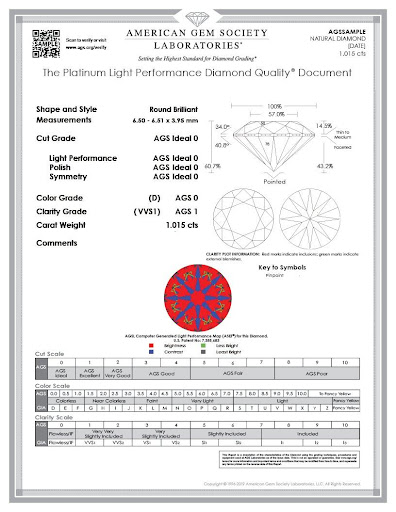
AGS also offered Diamond Quality Documents for four shapes. Round Brilliant, Princess Cut, Oval, and Emerald Cut. AGS produced guidelines for manufacturers for each of these shapes, identifying ranges which were most likely to quality for the AGS Ideal grade. However, since the grade is diamond-specific, meaning each diamond is scanned and ray-traced individually, the AGS guides were not a guarantee of the indicated grade.
A step down in sophistication from the DQD, the AGS Diamond Quality® Report, also known as a DQR, converts their cut-grade technology from three dimensions to two.
For diamonds submitted for a DQR, there was no ray-tracing of the diamond’s 3D model. Instead, it’s primary proportions, or measurement, were compared to a database and it received the grade which correlated to those measurements. This is the same way many other grading laboratories evaluate cut quality in round diamonds. While it’s not diamond-specific, like the DQD assessment, it permitted diamond producers to know the cut grade their stones will receive ahead of submission. Many producers prefer that foreknowledge.
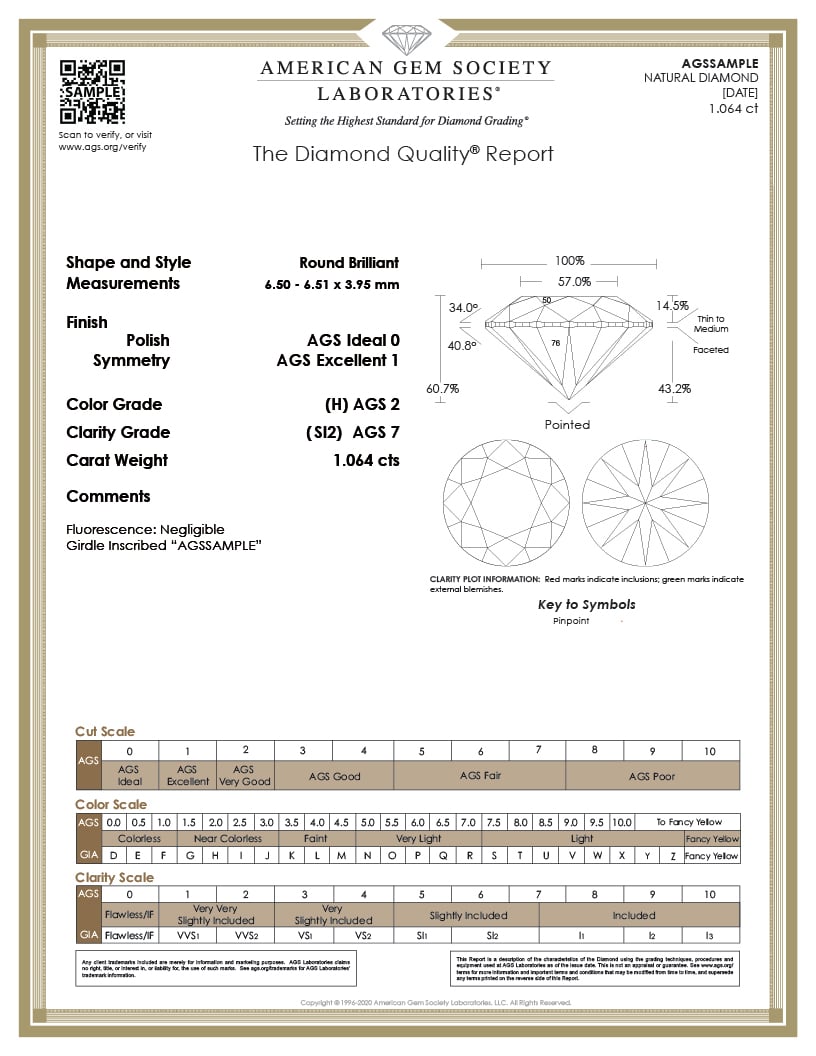
In addition to the well-known full Diamond Grading Report examples shown above GIA certificates are issued in a variety of formats for gemstones ranging from natural and lab grown diamonds to colored gemstones and pearls.
The world’s most recognized diamond grading institutes are GIA, with 11 grading locations and 8 schools of gemology, and the International Gemological Institute (IGI), with 20 grading locations and 14 schools of gemology. In the United States the Gem Certification and Assurance Lab (GCAL) are also widely recognized.
These institutes have much in common, but also specialize in different areas. You can get information on all of them on PriceScope’s education page covering Diamond Certification.
Want to learn more about diamonds? The PriceScope Diamond Forums and PriceScope Education Center are fantastic resources for learning all about diamonds, including grading and certifications. We are here to empower you to make better decisions when purchasing diamonds.
The American Gem Society (AGS, founded in 1934) is headquartered in Las Vegas, Nevada. They launched the American Gem Society Laboratories in 1996) and American Gem Society Advanced Instruments Division in 2004. Although they are separate organizations, they are all commonly referred to as “AGS.”
The American Gem Society trains and certifies jewelers, gemologists, and jewelry appraisers. Established in 1934 by Robert Shipley, who had established the GIA four years earlier, Shipley was motivated to spread awareness of the need for gemological education and encourage professionals to join the society, get training and become “certified” jewelers.
The AGS offers six designations and credentials for jewelry professionals. The two highest credentials are the Certified Gemologist Appraiser (CGA) and Independent Certified Gemologist Appraiser (ICGA).
AGS CGAs are highly regarded among jewelry professionals for the ability to analyze and identify different classes and categories of diamonds, gemstones, and jewelry and determine their value.
AGS ICGA’s are individuals whose sole business is appraising. ICGA’s do not purchase or sell diamonds, gemstones, or jewelry. To receive this certification the gemologist must complete the requirements for Registered Jeweler (RJ), Certified Gemologist (CG) and Certified Gemologist Appraiser (CGA), then complete an extensive course in personal property appraising. ICGAs must not only complete the annual recertification exam, but also submit proof of continuing education in their field every five years.
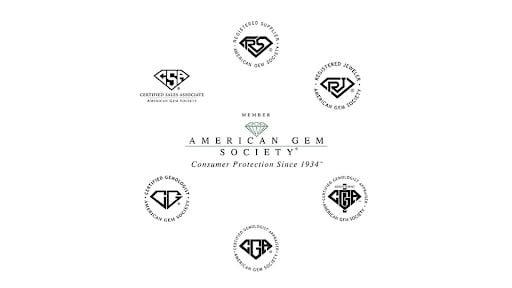
The American Gem Society Laboratories (AGSL or AGS) were established to fill a growing demand for cut grading. They operated from 1996 to 2022.
Throughout the 1900s the Gemological Institute of America (GIA), which first issued diamond reports in 1953, graded only three of the four diamond Cs. While carat, color and clarity were assessed and reported, the GIA only graded the finish of polished diamonds, failing to issue a grade for the influence of cut on appearance.
When the AGS Laboratories opened its doors a great deal of attention was drawn to their original cut grading system, which used measurements, or proportions, to classify diamonds on a scale of 0-10, with 0 being the highest grade, also called ideal. The term ‘AGS Ideal’ steadily became associated with diamonds of superior beauty, since they were cut with angles used to reflect and refract light more efficiently than other diamonds.
In 2005, after comprehensive studies done in tandem with the University of Arizona, AGSL introduced their light performance grading system; the industry’s first scientifically reviewed, objective, and repeatable cut grading method.
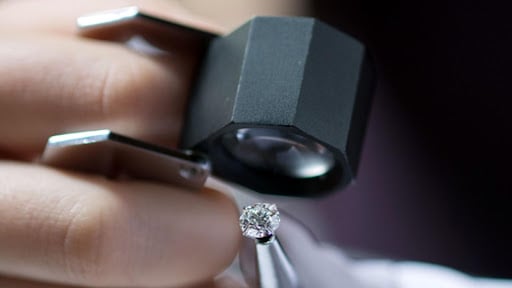
The process of diamond grading is largely uniform among the major gemological institutes. See PriceScope’s education page Diamond Grading Explained to learn about the strict sequence of intake, analysis and reporting.
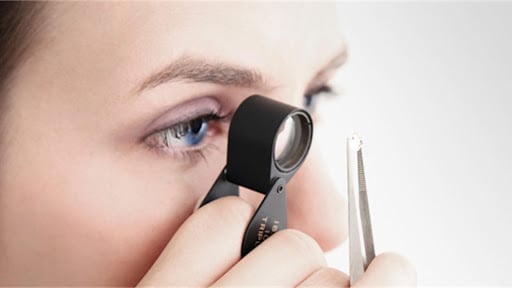
From their original roots as a moral and ethical society, to the advanced CGA and ICGA credentials they issue to professionals, to their strict three-dimensional cut grading system, peer-reviewed by science professionals, the American Gem Society, their Laboratories and Advanced Instruments Division have (arguably) the best reputation among grading institutes in the United States.
Cut quality is considered by many to have the most influence on a diamond’s appearance. Cut quality assessment is of particular interest to members of PriceScope. This is logical for a community established to help new consumers find beautiful diamonds. It’s difficult to assess diamond brightness, fire, and sparkle without seeing the diamond in person, so a cut grading system that reliably separates top performers from poor performers is desirable.
The AGS light performance grade is well respected by the PriceScope community. The top several AGS light performance grades may be compared to the highest colors in diamond color grading; where D,E,F are all considered ‘colorless’ due to their extremely close appearance with each other, AGS 0, AGS 1, AGS 2 are generally considered high performers – at the high end of other cut grading systems.
Diamond grading and certificates from AGS, GIA and other respected laboratories are available from vetted vendors, such as Blue Nile, Whiteflash and James Allen. Their ongoing commitment to excellence and high performance guarantees you won’t be disappointed in their diamonds.
Diamonds graded AGS 0, AGS 1 and AGS 2 frequently pass Holloway Cut Adviser analysis.
Statistically, a GIA Excellent diamond may be rated anywhere between AGS Ideal (AGS 0) and AGS 5 in performance, if graded using the AGS Platinum Report. To predict where a given GIA Excellent falls requires details of spread, proportions, and angles. But GIA facet-group data is averaged and further rounded up or down, so definitive predictions aren’t possible.
In general terms the proportions most frequently used by producers submitting diamonds to GIA correlate to AGS 2-4, and sometimes AGS 5 in performance, because those cutting angles produce a heavier diamond.
Opinions vary regarding AGS color grading. Some in the industry believe AGS is less strict with color than GIA, so a diamond graded G by AGS might be graded an H by GIA, etc. That opinion is generally held by jewelry professionals who sell diamonds graded by another laboratory, however. Many jewelers who carry diamonds graded by both AGS and GIA find them equivalent.
AGS clarity grading is sometimes said to be stricter than that of other laboratories. Their clarity plotting is also heavier than that of other laboratories, especially when viewing their online reports, where the marks denoting clarity characteristics are nowhere near as nuanced as their actual printed reports.
Diamond grading is subjective, especially in the areas of color and clarity. To keep diamond grading consistent, most laboratories use calibrated master color stone-sets and uniform clarity standards to ensure a baseline of uniformity. Nevertheless, a diamond that falls directly on the border of two grades may come out on one side of the other, depending on the subjective opinion of the AGS gemologist making the judgment.
Something which works in AGS’ favor is the single laboratory location. It’s undeniably easier to maintain consistency among a single group of graders in a single location than it is across multiple grading teams in different parts of the world.
Whether it’s GIA certification, or grading done elsewhere, due to the subjective nature of grading a standard deviation of +/- one grade is frequently deemed acceptable among professionals in the diamond grading industry.
This is perfectly logical from an analytic standpoint. At point of sale, however, a difference of +/- one grade may have significant influence on value. For this reason, it’s important for a buyer and a seller to agree on whether GIA, IGI, AGS, GCAL or another lab will issue the document of authority prior to sale.
Check out our loose diamond selection, which has all the information you need, like certification and grading details, to feel assured about your investment.
SEARCH FOR YOUR PERFECT DIAMOND